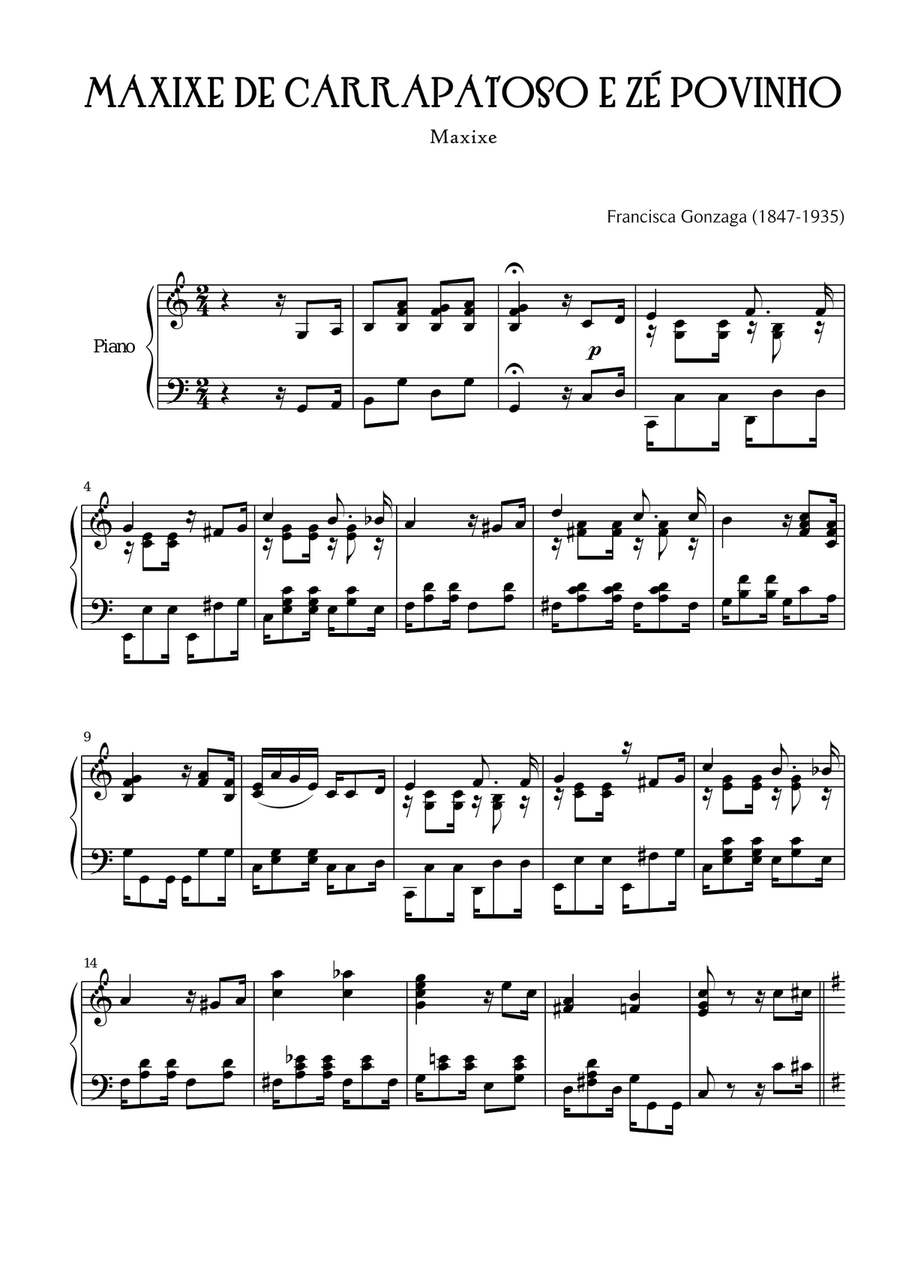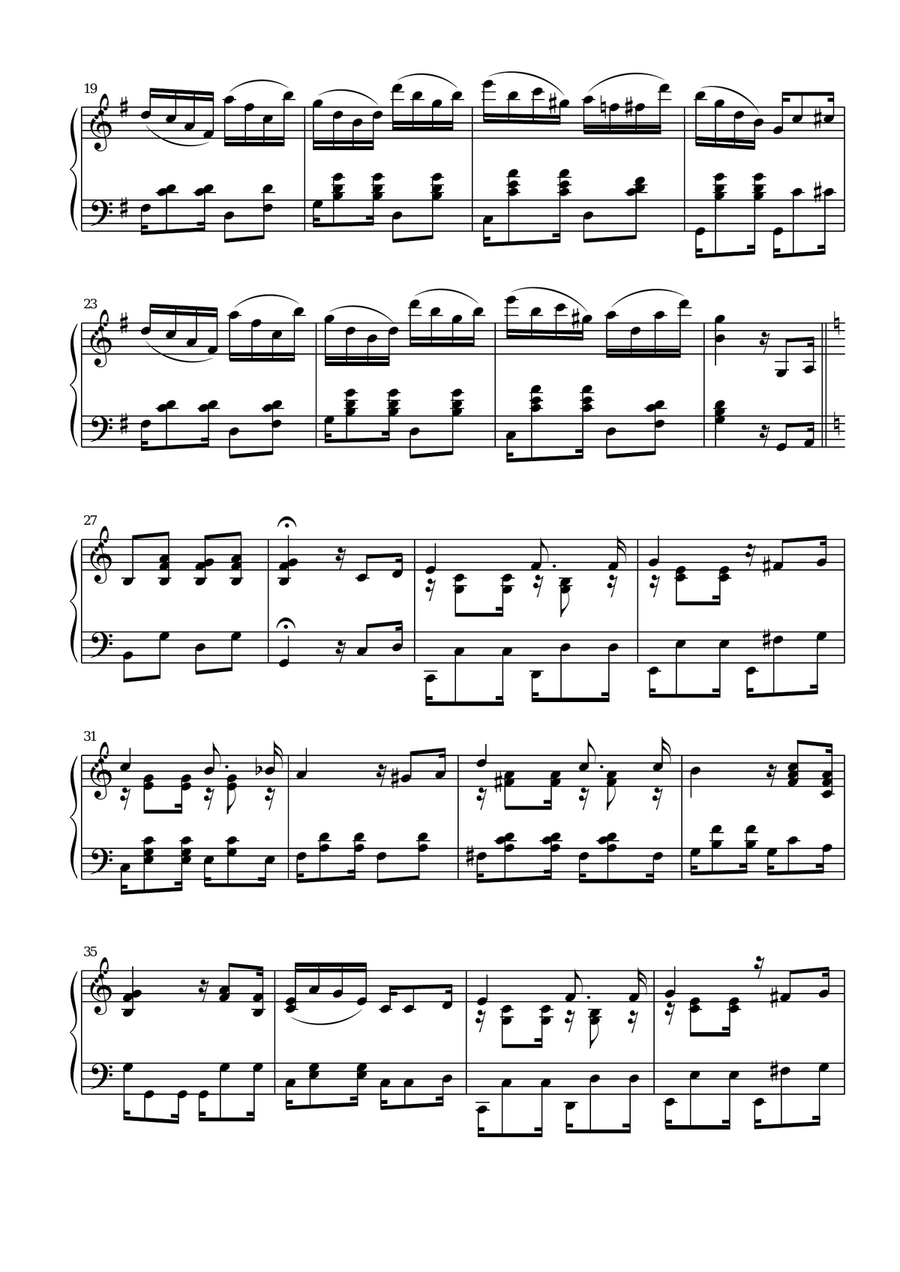Piano, Piano Solo - Level 5 - Digital Download
SKU: A0.1639493
By Roberto Szidon. Composed by Chiquinha Gonzaga. Arranged by Luiz C. Teixeira. This edition: pdf, streaming. 20th Century, 21st Century, Chamber, Classical, Latin. Score. 3 pages. Luiz C Teixeira #1207127. Published by Luiz C Teixeira (A0.1639493).
"Maxixe de Carrapatoso e Zé Povinho" by Chiquinha Gonzaga is a vivid example of her brilliant fusion of popular Brazilian rhythms, social commentary, and musical sophistication. This composition reflects her unique ability to blend humor, cultural critique, and musical mastery, all within the lively and irreverent context of the maxixe, Brazil's first truly urban dance form.
Title & Context
Meaning of the Title
“Maxixe”: A syncopated dance genre born in Rio de Janeiro in the late 19th century. It is sometimes called the Brazilian tango and is known for its sensuality, syncopation, and African-rooted rhythms.
“Carrapatoso” and “Zé Povinho”: These are satirical or folkloric figures.
Zé Povinho originated in Portuguese satire (by artist Rafael Bordalo Pinheiro) as a symbol of the common man—often critical, ironic, and politically charged.
Carrapatoso is likely a fictional, humorous name (possibly derived from carrapato, meaning tick) used to caricature a person or social type, possibly referencing corruption or parasitic behavior.
So, the title suggests a comic, satirical dance, possibly mocking the elites and politicians through the lens of popular characters.
Musical Analysis
1. Form and Style
Typical of maxixe, the piece likely follows a multi-sectional structure (AABBACCA or similar), reminiscent of the European dance suite, but with syncopated Brazilian flair.
Uses repetition and variation to create an energetic and engaging structure, ideal for dance.
2. Rhythm and Syncopation
The rhythmic identity of the maxixe is built on syncopation, habaneira patterns, and a constant duple meter (2/4).
Gonzaga often used hemiolas, accent shifts, and unexpected rhythmic groupings, giving her music a spontaneous, swinging energy.
In this piece, the rhythm probably mimics street carnival energy, filled with playful cadences and percussive momentum.
3. Melody and Harmony
Melody: Catchy, danceable, often diatonic with expressive chromaticism and playful ornamentation.
Gonzaga’s melodic lines are usually tuneful and highly singable, influenced by modinhas, lundu, and folk songs.
Harmony: Rooted in Romantic tonality with occasional modulations, use of secondary dominants, and turns that echo theatrical music of the time.
The interplay between tonal balance and chromatic surprise is typical of Gonzaga's writing.
This product was created by a member of ArrangeMe, Hal Leonard’s global self-publishing community of independent composers, arrangers, and songwriters. ArrangeMe allows for the publication of unique arrangements of both popular titles and original compositions from a wide variety of voices and backgrounds.
Digital Downloads are downloadable sheet music files that can be viewed directly on your computer, tablet or mobile device. Once you download your digital sheet music, you can view and print it at home, school, or anywhere you want to make music, and you don’t have to be connected to the internet. Just purchase, download and play!
PLEASE NOTE: Your Digital Download will have a watermark at the bottom of each page that will include your name, purchase date and number of copies purchased. You are only authorized to print the number of copies that you have purchased. You may not digitally distribute or print more copies than purchased for use (i.e., you may not print or digitally distribute individual copies to friends or students).





